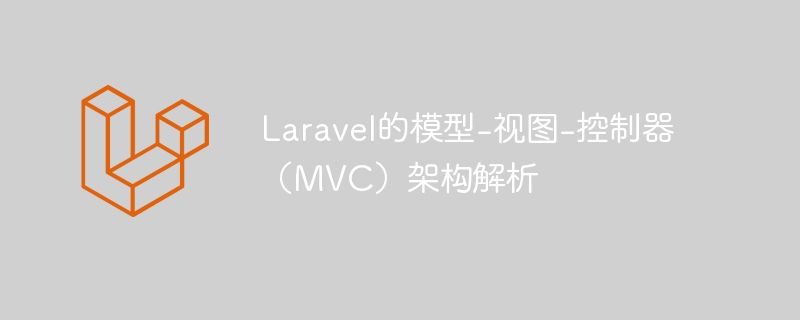

Laravel’s Model-View-Controller (MVC) Architecture Analysis
MVC (Model-View-Controller) is an architecture widely used in software development model. The Laravel framework also adopts the MVC architecture. Its core concept is to divide the application into three layers: Model, View and Controller. They work together through their respective responsibilities to achieve high cohesion of the code. and low coupling, making applications easier to maintain and expand.
Below we will delve into the MVC architecture in Laravel and understand its implementation through sample code.
The following is a simple user model example, assuming that our application needs a user table to store user information:
<?php
namespace AppModels;
use IlluminateDatabaseEloquentModel;
class User extends Model
{
protected $table = 'users';
protected $fillable = ['name', 'email', 'password'];
}In the above code, we created a User model, Inherited from the IlluminateDatabaseEloquentModel class. The $table attribute specifies the corresponding database table name, and the $fillable attribute defines fields that can be batch assigned.
The following is a simple view example, showing the user list interface:
<!DOCTYPE html>
<html>
<head>
<title>User List</title>
</head>
<body>
<h1>User List</h1>
<ul>
@foreach($users as $user)
<li>{{ $user->name }}</li>
@endforeach
</ul>
</body>
</html>In the above code, we use the syntax of the Blade template engine. {{ $user->name }} means outputting the name field of the $user model.
The following is a simple controller example for handling requests for user lists:
<?php
namespace AppHttpControllers;
use IlluminateHttpRequest;
use AppModelsUser;
class UserController extends Controller
{
public function index()
{
$users = User::all();
return view('user.list', ['users' => $users]);
}
}In the above code, we created a UserController controller class, in which the index method Used to handle requests for user lists. In the index method, we use the all method of the User model to obtain all user data, and return the user.list view through the view method, passing an array parameter named users.
Finally, we need to associate the request with the controller method in the routing:
Route::get('/users', 'AppHttpControllersUserController@index');In the above code, when the /users path is accessed, the index method of UserController will be called.
Through the above sample code, we can see the specific implementation of Laravel's MVC architecture. The model layer is responsible for interacting with the database, the view layer displays data to users, and the controller layer handles user requests and schedules business logic. This layered approach makes the application code clearer, more concise, and easier to maintain.
Summary:
Through the above analysis of Laravel's MVC architecture, we have learned about the model-view-controller layered architecture pattern. The advantage of the MVC architecture is the high cohesion and low coupling of the code, making application development more efficient and scalable. At the same time, the Laravel framework provides us with powerful tools and conventions, allowing us to implement the MVC architecture more conveniently.
I hope that the introduction of this article can give readers a deeper understanding of Laravel's MVC architecture and enable it to be better used in practical applications.
The above is the detailed content of Laravel's model-view-controller (MVC) architecture analysis. For more information, please follow other related articles on the PHP Chinese website!




